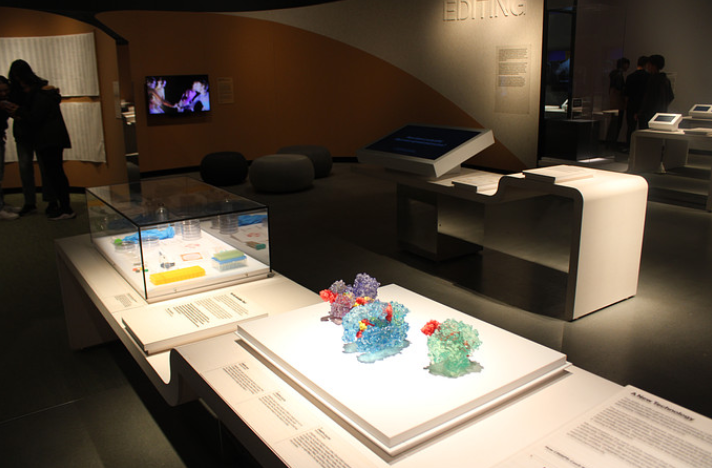
Reaching its second year since opening, the new MIT Museum located in Kendall Square has caught the attention of many visitors, including Jennifer Clapp’s AP Seminar class during their field trip on November 13th. The museum’s three floors incorporate various exhibits–some dedicated to art, the history of MIT, holograms, AI, and genetic editing. Notably, the MIT Museum holds the world’s largest collection of holograms.
With the new museum’s opening, there have been many new additions: including the genetic editing exhibit which sparked Clapp’s interest as it’s a key topic within the class. “This summer I went to the new MIT museum and I saw that they had a huge exhibit on genetic editing, which is one of the topics in the course. So I really wanted to make sure we went due to that particular exhibit,” stated Clapp.
Another reason Clapp brought her Seminar students on this field trip was for students’ research assignments, mentioning how she “hopes students will be inspired by something for an additional research topic.” For these assignments, students must pick a research topic within something they’re interested in and find a possible solution. Students also have to write about their topic through a critical lens to give a presentation on the issue as a whole with their team.
During the field trip, students took the MBTA switching from the orange to the red line, and got off at MIT station located next to the museum. Once at the museum, students indulged in a presentation regarding light and high-speed photography and its uses in science. Riding off this presentation, students then had the opportunity to experiment.

Within their tables, students were tasked with making water stick to a plant or repelling it off of a surface. Students were given a variety of materials such as sugar, salt, soap, and a 3D pen. To test whether or not their prototype worked, students flashed light on the plant or surface while someone else used an app to take high-speed pictures to catch the fast-paced movement of the water.
Once each group completed their prototype, they recorded their test using a professional high-speed camera. After all the groups finished, they discussed their methods as a class. The experiment surely set the mood for the rest of the field trip, with a few students even naming this as their favorite part of the field trip. “My favorite part of the field trip was being able to work with my peers when conducting the science experiment about light and photography,” said sophomore Anniyah Azhar.
For the rest of the trip, students walked freely around the museum’s three floors, most going to the exhibit that piqued their interest. The interactive AI and genetic editing exhibit was a common favorite among the students. Azhar added that she enjoyed “how topics such as genetics and AI were made into their own exhibits with historical or artistic approaches.”
Specifically, the AI typewriter was a huge hit among students, even causing a line to form. With the AI typewriter, students could write poems integrated with AI’s random lines. Sophomore Sophia Chen recalled how fun the AI exhibition was because it was so interactive. “I was very interested in the interactive AI exhibits because we got to ask the robot questions, write poetry with AI, and decide which videos were real or made by AI which was cool,” added sophomore Nora Donaghey.

As the world of science and technology develops rapidly many are faced with a striking question: What’s the limit? Clapp plans to emphasize questions like these, as the class will dive deeper into these technologies from a moral and ethical perspective. Technologies such as CRISPR, a technology used to modify DNA, are essential to look at within the topic.
“One thing from the trip that sparked my interest was the genetic editing part of it, especially looking at the display of fused animals through genetic editing. It made me wonder about the limits of genetic editing,” expressed sophomore Lillian Fang.
Reflecting on their trip to the MIT Museum, the Seminar students gained not only a deeper understanding of genetic editing and AI but also a renewed sense of curiosity and inspiration.





